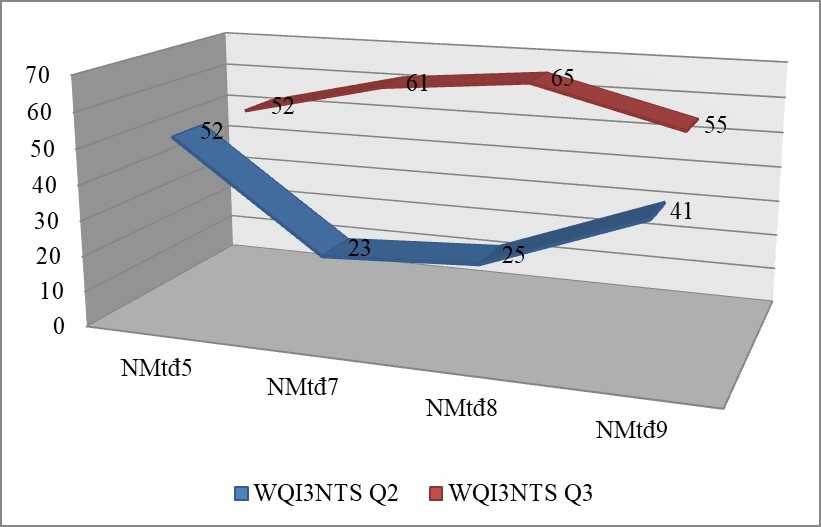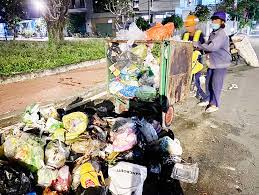04. ẢNH HƯỞNG CỦA NƯỚC THẢI BIOGAS VÀ THAN SINH HỌC TRÀM ĐỐI VỚI SỰ PHÁT THẢI CH4 VÀ N2O TỪ ĐẤT TRỒNG LÚA
Giới thiệu
Sản xuất khí sinh học từ chất thải chăn nuôi và sử dụng nước thải sau túi ủ biogas làm phân bón cho cây trồng sẽ là một công nghệ đầy hứa hẹn giúp giải quyết các vấn đề ô nhiễm nguồn nước. Tuy nhiên, nước thải biogas được tạo ra trong các hầm kỵ khí chứa khoảng 60 % khí metan. Do đó, nó có thể dẫn đến nguy cơ làm gia tăng lượng khí thải gây hiệu ứng nhà kính. Một thí nghiệm trong chậu với lúa (OM5451) đã được thiết lập để đánh giá ảnh hưởng của nước thải biogas và than sinh học tràm đến lượng phát thải khí CH4 và N2O trong điều kiện nhà lưới. Nghiên cứu hiện tại được thực hiện có sáu nghiệm thức với bốn mức than sinh học tràm được trộn trong đất (0, 2, 10 và 20 tấn/ha). Kết quả cho thấy lượng phát thải khí CH4 từ tất cả các nghiệm thức được bổ sung than sinh học tràm đã giảm đáng kể từ 29,3 % đến 47,1 % so với đối chứng. Đồng thời, phát thải khí N2O cũng giảm từ 20 % đến 47,7 %. Kết luận, việc sử dụng than sinh học tràm đã làm giảm đáng kể lượng khí thải N2O và CH4 trong khi vẫn duy trì hoạt động sản xuất lúa gạo.
Toàn văn bài báo
Trích dẫn
[2]. P. V. Nữ, B. T. Nga và T. Izumi (2015). Đánh giá khả năng sử dụng Rơm và Lục bình trong ủ yếm khí bán liên tục - Ứng dụng trên túi ủ Biogas polyethylene với quy mô nông hộ. Tạp chı́ Khoa học Trường Đại học Cần Thơ, vol. 01, no. 36, pp. 27 - 35.
[3]. T. Fujiwara (2012). Concept of an innovative water management system with decentralized water reclamation and cascading material-cycle for agricultural areas. Water Sci. Technol., vol. 66, no. 6, pp. 1171 - 1177.
[4]. K. Minamikawa, H. C. Khanh, Y. Hosen, T. S. Nam and N. H. Chiem (2019). Variable-timing, fixed-rate application of cattle biogas effluent to rice using a leaf color chart: microcosm experiments in Vietnam Kazunori. Soil Sci. Plant Nutr. ISSN, vol. 10, no. 1, pp. 2 - 10.
[5]. A. Singla and K. Inubushi (2014). Effect of biogas digested liquid on CH4 and N2O flux in paddy ecosystem. J. Integr. Agric., vol. 13, no. 3, pp. 635 - 640.
[6]. J. Lehmann and S. Joseph (2015). Biochar for Environmental Management.
[7]. D. Dejene and E. Tilahun (2019). Role of biochar on soil fertility improvement and greenhouse gases sequestration. Horticulture International Journal, vol. 3, no. 6. pp. 291 - 298.
[8]. Y. Xiao, S. Yang, J. Xu, J. Ding, X. Sun and Z. Jiang (2018). Effect of biochar amendment on methane emissions from paddy field under water-saving irrigation. Sustainability (Switzerland), vol. 10, no. 5. pp. 3 - 13.
[9]. X. Liu, Z. M. Qi, Q. Wang, Z. W. Ma and L. H. Li (2017). Effects of biochar addition on CO2 and CH4 emissions from a cultivated sandy loam soil during freeze-thaw cycles. Plant, Soil Environ., vol. 63, no. 6, pp. 243 - 249.
[10]. E. P. A. Pratiwi and Y. Shinogi (2016). Rice husk biochar application to paddy soil and its effects on soil physical properties, plant growth, and methane emission. Paddy Water Environ., vol. 14, no. 4, pp. 521 - 532.
[11]. E. W. Bruun, D. Müller-Stöver, P. Ambus and H. Hauggaard-Nielsen (2011). Application of biochar to soil and N2O emissions: Potential effects of blending fast-pyrolysis biochar with anaerobically digested slurry. Eur. J. Soil Sci., vol. 62, no. 4, pp. 581 - 589.
[12]. X. L. Nguyen et al., (2018). Properties of Biochars prepared from local biomass in the Mekong Delta, Vietnam. Bioresources, vol. 13, no. 4, pp. 7325 - 7344.
[13]. T. Parkin et al., (2003). USDA-ARS_GRACEnet_chamber-based_trace_gas_flux_mea. pdf.
[14]. C. C. Rhoades, K. L. Minatre, D. N. Pierson, T. S. Fegel, M. F. Cotrufo and E. F. Kelly (2017). Examining the potential of forest residue-based amendments for post-wildfire rehabilitation in Colorado, USA. Scientifica (Cairo)., vol. 2017.
[15]. Z. Dai et al., (2017). Potential role of biochars in decreasing soil acidification - A critical review. Sci. Total Environ., vol. 581 - 582, pp. 601 - 611.
[16]. A. Singla and K. Inubushi (2014). Effect of biogas digested liquid on CH4 and N2O flux in paddy ecosystem. J. Integr. Agric., vol. 13, no. 3, pp. 635 - 640.
[17]. Z. Wu, Y. Song, H. Shen, X. Jiang, B. Li and Z. Xiong (2019). Biochar can mitigate methane emissions by improving methanotrophs for prolonged period in fertilized paddy soils. Environ. Pollut., vol. 253, pp. 1038 - 1046.
[18]. Q. Nan, L. Xin, Y. Qin, M. Waqas and W. Wu (2021). Exploring long-term effects of biochar on mitigating methane emissions from paddy soil: a review. Biochar, vol. 3, no. 2, pp. 125 - 134.
[19]. M. L. Cayuela, M. A. Sánchez-Monedero, A. Roig, K. Anley, A. Enders and J. Lehmann (2013). Biochar and denitrification in soils: When, how much and why does biochar reduce N2O emissions?. Sci. Rep., vol. 3, no. Experiment 2, pp. 1 - 7.
[20]. T. S. Nam, H. Van Thao, N. H. Chiem, N. Van Cong and T. Mitsunori (2021). Rice husk and melaleuca biochar additions reduce soil CH4 and N2O emissions and increase soil organic matter and nutrient availability. F1000 Research, vol. 10, no. November, p. 1128.
[21]. J. Wang, X. Pan, Y. Liu, X. Zhang and Z. Xiong (2012). Effects of biochar amendment in two soils on greenhouse gas emissions and crop production. Plant Soil, vol. 360, no. 1 - 2, pp. 287 - 298.
[22]. S. Butnan, J. L. Deenik, B. Toomsan, M. J. Antal and P. Vityakon (2016). Biochar properties influencing greenhouse gas emissions in tropical soils differing in texture and mineralogy. J. Environ. Qual., vol. 45, no. 5, pp. 1509 - 1519.
[23]. C. Wang, D. Y. F. Lai, J. Sardans, W. Wang, C. Zeng and J. Peñuelas (2017). Factors related with CH4 and N2O emissions from a paddy field: Clues for management implications. PLoS One, vol. 12, no. 1, pp. 1 - 23.
[24]. M. L. Cayuela, L. van Zwieten, B. P. Singh, S. Jeffery, A. Roig and M. A. Sánchez-Monedero (2014). Biochar’s role in mitigating soil nitrous oxide emissions: a review and meta-analysis. Agric. Ecosyst. Environ., vol. 191, pp. 5 - 16.
[25]. J. Wang, W. Zhong, Y. Kang, H. Deng and C. Han (2019). N2O emission mitigation and microbial activity after Biochar and Cao application in a flooded nitrate-rich vegetable soil. Acta Agric. Scand. Sect. B Soil Plant Sci., vol. 69, no. 3, pp. 257 - 267.
[26]. X. Qin et al., (2016). Long-term effect of biochar application on yield-scaled greenhouse gas emissions in a rice paddy cropping system: a four-year case study in south China. Sci. Total Environ., vol. 569 - 570, pp. 1390 - 1401.
[27]. P. N. Thoa et al., (2021). Nghiên cứu khả năng hấp phụ nitrat trong môi trường nước của than sinh học từ tràm. Tạp chí khoa học, vol. 50, no. 1, pp. 40 - 53.





